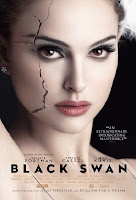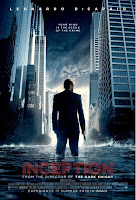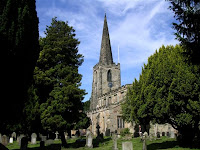 |
| Example of a close up shot which influenced out opening. |




 |
| Example of a close up shot which influenced out opening. |




 Even though we hoped to set our thriller at Tutbery castle as we thought the shots would be really effective, however because the shots didnt work, we decided to go for a local church, which although isn't the same as Tutbery would still collect some effective shots. As the church was locked we couldn't collect any inside shots from the church, this creates some problems as the mise en scene is obvious if set somewhere else than a church. The inside shots we did at Emma's house and we did birds eye view shots so we didn't get the background in so it wasnt obvious of where we were, and that we werent in a church.
Even though we hoped to set our thriller at Tutbery castle as we thought the shots would be really effective, however because the shots didnt work, we decided to go for a local church, which although isn't the same as Tutbery would still collect some effective shots. As the church was locked we couldn't collect any inside shots from the church, this creates some problems as the mise en scene is obvious if set somewhere else than a church. The inside shots we did at Emma's house and we did birds eye view shots so we didn't get the background in so it wasnt obvious of where we were, and that we werent in a church. 

Me and Emma devised a questionnaire which we asked as many as people as we could find at the time, including the people in our class, teachers and friends. From the questionnaire we analysed the results and we will make suitable adaptations to the ideas about our opening to try and make it suitable for the target audience and what they prefer to see in the opening of a thriller. We presented our results in pie charts to make it clear which answers were the most popular.






 Location
Location



The first clip will be of Will, who will be walking towards the camera, down the corridor. It will be a full body shot until he eventually gets to close then the camera will pan round and follow him as he gets closer to the door. When he gets close to the door the camera angle will cut to the other side of the door where you can only see Will through the glass in the door. This will be followed by another cut which will be an extreme close up of Wills hand pushing the door to open it. There will then be a long shot of Wills whole body coming through the door. There will then be a cut to Frankie who will be deep in concentration at her phone whilst walking towards the door. At the last second before Frankie notices she is going to bump into Will she looks up and notices that there is going to be a collision. There will be a close up of Frankie’s shocked face. The shot will then be from the side getting both of their bodies in full perspective to see them bump into each other. These shots will be quick and will jump cut very fast to show how fast they were going when they bumper into each other. There is then a slow motion shot of all of Frankie’s books and work falling to the floor by their feet. They both pause then both rush down to try and pick up the folders, this is at a low angle and is a mid shot but you can see their whole bodies and Frankie’s work on the floor. There is then a side, long shot of both of them looking closely at eachother, making eye contact as if they are both bedazzled by each other. Will then starts the dialogue, it is a mid shot of Will allowing the audience to see his emotions and facial expressions.
‘Hey’
Will says it in a slightly surprised tone.
Frankie then replies, within the same shot, a mid shot, however holding her folders.
‘Hi’
She replies with a sarcastic tone The shot then cuts back to Will where he is apoligising. With a slight stutter as he is embarrassed he walked into her.
‘I, I’m really sorry’
Frankie’s reply then shocks Will, as he expects her to be understanding however she comes across rude.
‘You gonna’ move then,
Frankie then barges past Will and opens the door, you can see the back of Frankie over Wills shoulder, allowing the audience to see Wills expression as she is walking away from him. Will then carries on walking the way he was going in the first place, and the door closes behind him, you can see Frankie walking out through the crack of the door then through the glass. It slowly fades out.
Day 1 editing
After completing all the filming which we needed for this task. We then uploaded our clips onto Adobe, where we then began editing. As a group we all contributed ideas of things we could edit in to improve our task. We also overcome hurdles together as non of us were very familiar with the program. Eventually after experimenting with different ideas and figuring out the program we completed our preliminary task.
The Final Product
Overview
Overall I believe our group worked very well as a team. Even though Will wasn’t present on the first day of planning, everyone made lots of contribution towards our video and the thoughts and ideas behind it. I think our preliminary task does shows many different camera positions, angles and movements. Including, low angle, over the shoulder, panning, extreme close up and long shots. If our group had more time I think background sound or music would improve our piece. I think the idea about sound in our first storyboard would have still fit with this sequence. Therefore if we could improve I would suggest adding music.